You might have heard of the phrase, “the moon is made of cheese.” After all, it’s round like a cheese. It’s yellow like a cheese. And when you zoom into the moon, it sure does look a Swiss cheese surface.
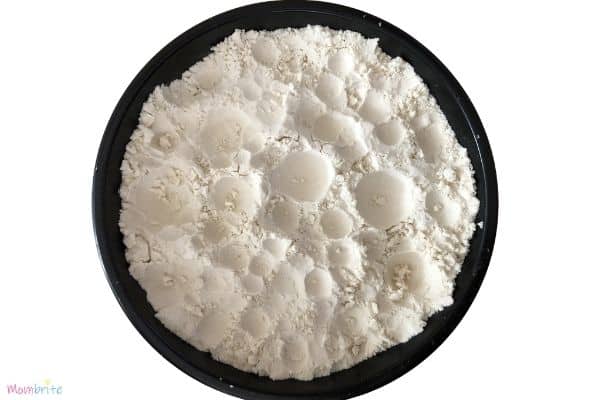
Alas, we know the moon is not made out of cheese. But what are the craters on the moon?
In this simple moon crater activity, we will explore how the moon gets its Swiss cheese appearance, and why we see the craters so vividly.
Make Moon Craters STEM Activity
Materials:
Instructions:
- Fill the cake pan about halfway with flour or moon sand.
- Try dropping different size marbles from different heights and angles.
** You may want to do this activity outside since inevitably, flour or moon sand will spill out of the cake pan.
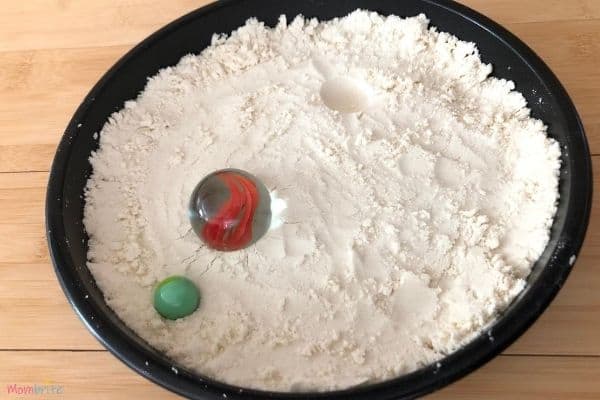
My kids had a lot of fun with this moon crater activity. At first, they calmly dropped a couple of marbles and observed the different size holes the marbles made. But then things got a little crazy, and they started pretending that a massive asteroid shower collided with the moon. Marbles started bouncing off and landing on top of each other. That resulted in lots of giggles and exclamations of “let’s do that again!”
I do recommend using moon sand instead of flour for this activity. Moon sand is moldable, so it will retain the shapes of the marbles better than just flour.
This moon crater activity also doubles as a gross motor activity because it takes good aim to get the marbles in the cake pan. We had many that either completely missed the pan or hit the edge and bounced out. The kids had fun chasing after the runaway “asteroids.”
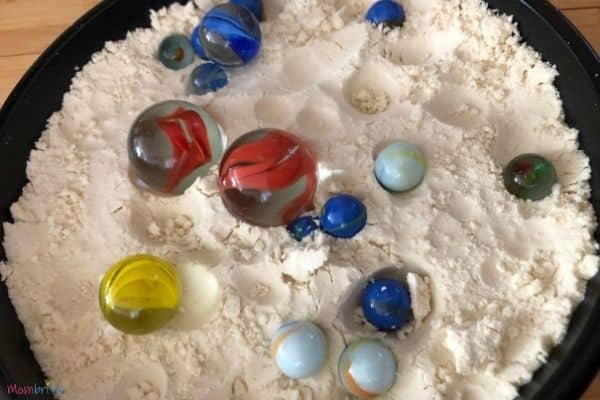
I explained to them that sometimes, an asteroid or meteorite might miss the moon or make only slight contact. In those cases, no new craters are formed.
Science Behind Moon Craters
Moon craters formed when asteroids or meteorites (aka rocks from space) smash into the surface. The simple impact craters have a smooth, bowl-like shape with smooth walls, which are the ones you see in this experiment.
The impact was so powerful that it generates a shock wave that sprays materials out in all directions. You can see the spray if you observe the flour or moon sand carefully as the marble landed.
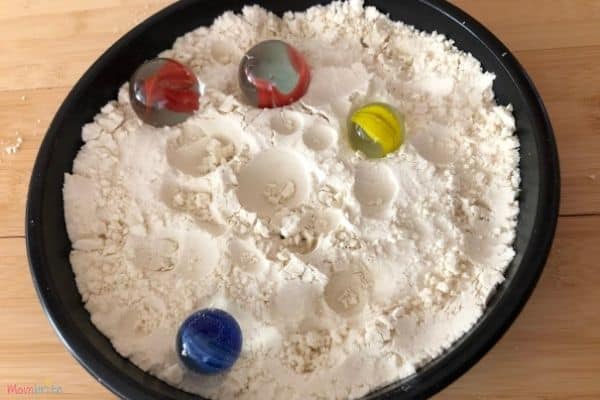
The moon doesn’t have an atmosphere. It has no wind, weather, or water. Thus, once a mark (in this case, a huge mark) has been made on the moon, there is not much that can erase it.
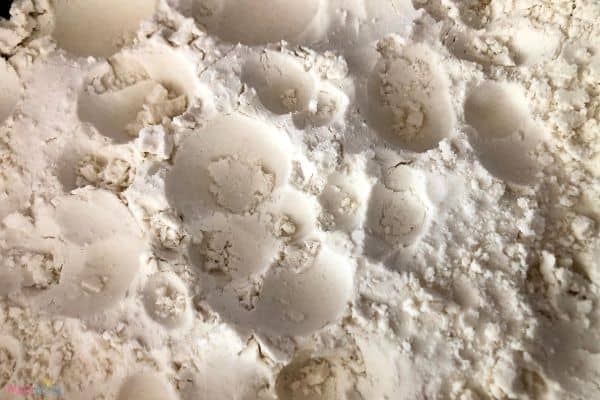
Science Extensions
- Try dropping different objects in the cake pan, such as irregularly shaped rocks. What shapes are the craters they create?
- Drop something extremely light, like a styrofoam ball, from the same height as marble with similar size. What do you observe about the craters?
- Throw the marble at the flour instead of just dropping it. Is the crater bigger?
YOU MAY LIKE:
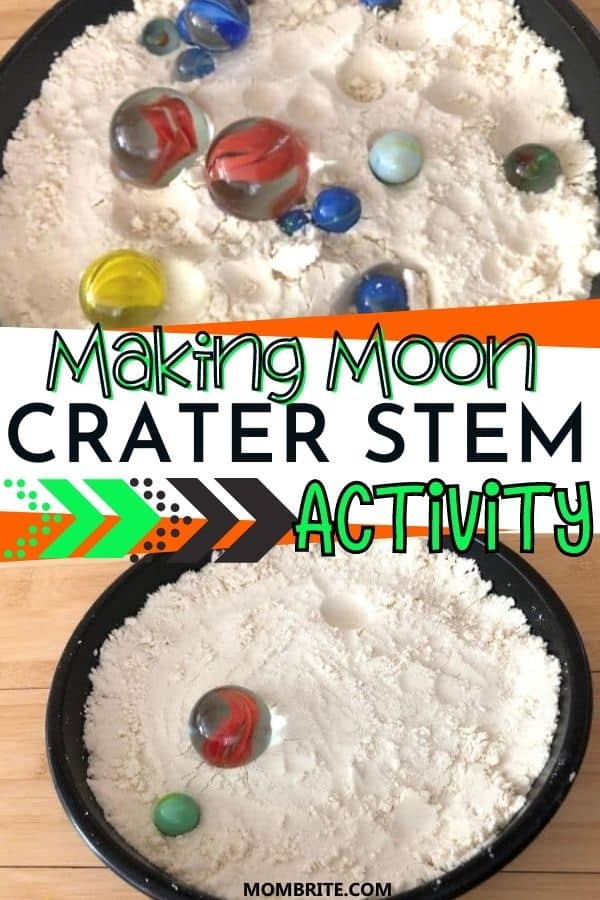

Thanks for this STEAM activity, and for the moon sand recipe. My pre-k students will love it.
aw I am so glad your prek students enjoyed it! 🙂
do you have a suggestion on how they can record the outcome of the activity aside from drawing it? Thanks!
You can have the students measure the size of the craters and record them on a sheet. You can measure the depth of the craters as well as the diameter. If the students are a bit older, then you can calculate the area of the circle!